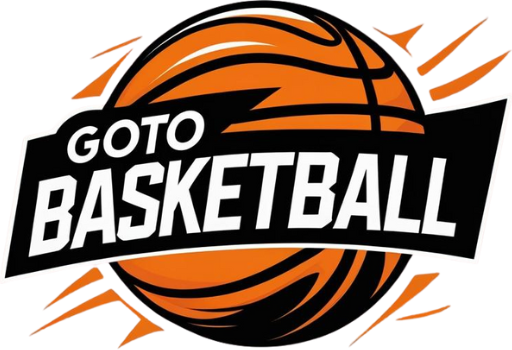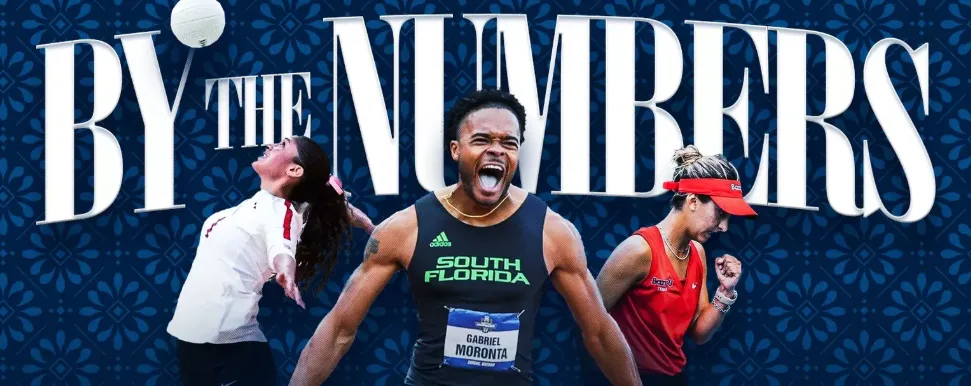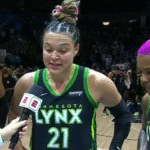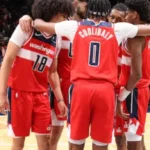The NCAA has released its 2025 figures, and they show something powerful: Hispanic/Latino student-athletes are taking a more prominent place than ever. During Hispanic Heritage Month, as the country reflects on contributions and identity, the NCAA marks a milestone: 38,654 Hispanic/Latino athletes competing across Divisions I, II, and III, the highest number yet. That represents a 62% jump over the past decade. And it’s not just about getting to campus: academic success is rising, too.
- Numbers That Tell a Story
- What Sports Are Breaking the Mold
- The majority of participation (Raw Numbers)
- The percentage of those who participated was the highest
- Trends of Growth: What Is Growing Rapidly?
- Academic Success: Stereotyping Busted.
- A Historical Lens: The Origin and the Importance of History.
- My Take: Opportunities & What’s Next.
Numbers That Tell a Story
Here are the big numbers that show just how much things have changed:
-
38,654 Hispanic/Latino student-athletes in 2024-25. That’s about 7% of the total NCAA student-athlete population.
-
This is up 1,700 athletes (≈4.6%) from last year.
-
A decade ago, their numbers were about 14,792 lower, so a 62% growth in 10 years.
Then there’s the breakdown by division:
NCAA Division |
Number of Hispanic/Latino Student-Athletes |
Share of that Division’s Athletes |
Share of All Hispanic/Latino Athletes |
|---|---|---|---|
Division I |
~11,758 |
~5.8% |
~30.4% |
Division II |
~10,984 |
~7.8% |
~28.4% |
Division III |
~15,912 |
~7.1% |
~41.2% |
So, while more than 40% of all Hispanic/Latino participation is in Division III, Division II, and Division I are also showing steady growth.
What Sports Are Breaking the Mold
The growth is not even, with some sports having much higher numbers of Hispanic/Latinos, and others increasing at an alarming rate.
The majority of participation (Raw Numbers)
Men’s Sports:
- Soccer: 4,680
- Football: 3,963
- Baseball: 3,488
- Outdoor Track & Field: 2,393
- Indoor Track & Field: 2,036
Women’s Sports:
- Soccer: 2,927
- Softball: 2,154
- Outdoor Track & Field: 2,108
- Indoor Track & Field: 1,842
- Volleyball: 1,330
The percentage of those who participated was the highest
Other sports can be lower in terms of the total number of athletes, but with a proportion of a higher number of Hispanic/Latino student-athletes. For example:
- In men’s sports, soccer is the leader (approximately 16.5%), then volleyball, wrestling, water polo, and tennis.
- In female sports, wrestling tops the list with 18.8% followed by water polo, softball, soccer, and tennis.
Trends of Growth: What Is Growing Rapidly?
- Growth of one year (2023-24 to 2024-25): Ice hockey (2023-24 to 2024-25) of the male population, Golf (2023-24 to 2024-25) of the male population, Water polo (2023-24 to 2024-25) of the male population, Women’s wrestling (almost +48.3% to 2023-24 to 2024
- Potential growth (2019-20 to 2024-25): Men: golf, indoor track and field booming; women: gymnastics, field hockey, beach volleyball, and others are on the rise.
- Growth rate over 10 years: Men Men Volleyball increased by more than or even tripled, by an average of up to ~102.6%, lacrosse increased by up to 101.4%, and wrestling increased by up to 87; women’s Beach Volleyball increased by up to 191.9%, field hockey increased by up to 155, and lacrosse increased by over 100.
Academic Success: Stereotyping Busted.
The increase in sports activity has not been accomplished at the expense of academics. As a matter of fact, Hispanic/Latino student-athletes are on the rise:
- Hispanic / Latino student-athletes have had a Division I Graduation Success Rate (GSR) of 89.
- This is an increase of 25 points as compared to 2002, when the NCAA first commissioned such numbers.
- Since 2014, it’s improved by 7 points.
Not just are increasing numbers of Hispanic/Latino students competing, they are also staying, graduating, and contributing in other ways than sports.
A Historical Lens: The Origin and the Importance of History.
To get the full picture of the 2025 figures, it is useful to refer to the past:
- There were many fewer Hispanic/Latino athletes in programs ten years ago. The barriers were occasionally visibility, access to scholarship, discouragement by culture, or logistical and economic barriers.
- It has become more deliberate in the past 10-15 years: outreach-programs, diversity-programs, recruiting more in underserved areas, and increasing sports-programs.
- The fact that women have increased in wrestling, beach volleyball, field hockey, etc, demonstrates opportunities being developed not only to the sports historically strong, but also new and emerging ones, so that more student-athletes are given a choice that will be appealing to them.
Why it matters:
- Representation: Young Hispanic/Latino students will be able to do anything they want to do in life when they see people of their own race succeeding in college sports.
- College opportunity: The engagement opens up to scholarships, education, networks, and life skills.
- Sport diversity enhances competitiveness: an increased number of styles, attitudes, and narratives.
My Take: Opportunities & What’s Next.
It is not data, but it is a promise coming true. However, new questions and challenges always come with growth.
What’s working
- Schools and the NCAA appear to be making a greater effort in terms of discovering talent within Hispanic/Latino communities.
- An increased number of sports are being sponsored in all divisions.
- Academic support systems are solid, such that achievement is not merely being gauged by who made the roster, but who remained and graduated.
What to watch out for
- Fair distribution of resources: Are there equal resources in all the divisions, all schools, all sports? The growth can be uneven at times: huge in Division III and smaller in Division I or vice versa.
- Maintaining the balance between athletics and academics: The rate of graduation is good, and the stress on student-athletes is intense. It is important to ensure high academic standards.
- Cultural Support and inclusion: More than numbers; making athletes feel welcome and supported, culturally understanding issues are essential to retention and success.
What’s next
- Keep increasing the availability of non-traditional sports to Hispanic/Latino youth.
- Greater data gathering and social visibility to communities to get an idea of where they are making inroads or where they are falling short.
- Initiate high school to college transition programs in underserved communities.
- Additional mentorship and presence: the stars that come out of such communities can inspire the future generation.





